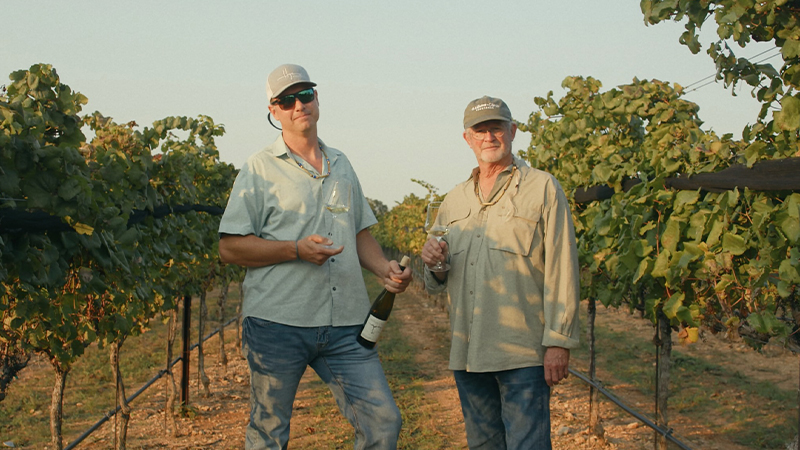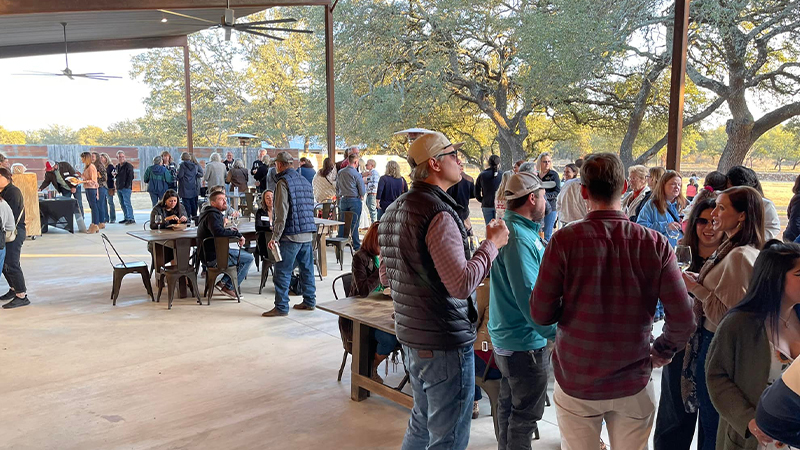The intricate winemaking traditions and grape-friendly terroirs of southern France amply deserve their viticultural accolades, and bottles from Bordeaux and the Rhône Valley have appeared on “Best Of” lists for centuries. Offering complexity and nuance, these are wines that collectors worldwide eagerly pay high-dollar prices for.
American drinkers who love the flavors and textures of southern French wines but also want to support domestic wineries — and save a bit of cash in the process — just might find their new favorites in the Texas Hill Country, a rapidly growing group of American Viticultural Areas (AVAs) producing bottles that bear many appealing similarities to Bordeaux and Rhône wines, while still embracing and showcasing their own unique characteristics.
More than fair-weather friends
The Texas Hill Country refers to a large swath of hilly, grassy terrain in southwestern-central Texas, north of San Antonio and west of Austin. The climate in this region of the Lone Star state features hot, dry summers and mild winters. It also experiences higher humidity than more arid parts of the state, which keeps the soil hydrated enough for grape varietals typically associated with the southern Rhône, like Mourvèdre, Roussanne, Malbec, and Clairette Blanche, to thrive.
Don’t miss a drop!
Get the latest in beer, wine, and cocktail culture sent straight to your inbox.
While the Hill Country isn’t exposed to coastal climate elements like those present in Bordeaux, the year-round mild temperatures impart enough similarities to allow winemakers to grow Bordeaux varietals and gain inspiration from the region’s production methods. Meanwhile, the southern Rhône Valley generally has a more continental climate. “Our growing region is very similar to the Rhône Valley region, thanks to the rolling hills and the rivers cutting through. It does get pretty hot in both places, so a lot of the grapes that grow well are not ones that are dependent on a diurnal shift, with extremely cold nights to maintain higher acidity,” explains winemaker Mike Nelson of Ab Astris in Stonewall, Texas.
It’s worth noting that central Texas has longer and hotter summers than Bordeaux, as well as far less of a diurnal shift, or difference in daytime and nighttime temperatures. As a result, the grapes grown here have bigger and bolder flavor profiles, which makes for wines that echo southern France, just with a noticeable upshift in terms of robust juiciness.
Twinning terroirs?
In addition to the climate similarities, the terroirs of the Texas Hill Country, and appellations like Saint-Émilion, Côtes-du-Rhône and Châteauneuf-du-Pape have one very important factor in common: the presence of limestone. This soil type imparts valuable nutrients to grapes and helps them retain moisture during stretches of hot, dry weather.
Granite also plays a major role in the terroir of the Texas Hill Country, and its presence makes for hardier vines that can withstand high temperatures. Given its considerable size, the Hill Country’s terroir will vary from vineyard to vineyard, with some areas having a higher quantity of clay, others featuring more limestone, and still others working with granite-heavy soil. The range of wines that these soils produce is inspiring winemaker Chris Brundrett of William Chris Vineyards to spearhead an exciting development: “The Texas Hill Country is one of the largest AVAs in the country, which is why we’re now submitting a proposal for sub-appellations,” he says.
Putting a spin on classic styles
“The Texas Hill Country is arguably only 25 years old [as a wine region], so it’s hard to compete with regions that are hundreds of years deep in tradition,” Brundrett notes. “But every time I come home [from Bordeaux or the Rhône], I’m full of new ideas and am drawing so much inspiration.”
At William Chris, he chooses to ferment almost all his wines in concrete or oak, vessels that are representative of those used in traditional southern French winemaking, with concrete amphorae tanks having been used for centuries across Europe. Both Bordelaise and Rhône winemakers appreciate concrete’s unique ability to preserve the flavor of the grapes while also oxygenating the wine as wooden barrels would, without imparting unwanted flavors. Brundrett also utilizes more current winemaking technologies from southern France. “We were the first in the United States to use a Galileo tank [a more lightweight concrete tank made in Bordeaux that’s optimized for efficiency and sustainability], and we’re actively fermenting a couple of different wines in there,” he explains.
At Ab Astris, Nelson says that growing Rhône grapes allows him to take full advantage of the Hill Country terroir, but when making his blended wines –– like his popular Rhône-style white, Stello –– he uses Rhône traditions as a jumping-off point before adding his own touches. “I’m kind of a selfish winemaker, in that I make what I like and I hope that there’s crossover to our consumers,” he says. Ab Astris has a thriving crop of Clairette Blanche (a common blending grape in the Rhône), so Nelson decided to play around with this grape’s blending potential, creating a Châteauneuf-du-Pape-inspired blend of Roussanne, Picpoul Blanc, Marsanne, and Clairette Blanche. “The Roussanne is a medium-plus-bodied white that makes a great base layer for the blend,” he explains. “I use the Marsanne sparingly, to give just the essence of honey and a bit of waxiness. I knew what the goal was, and it ultimately wasn’t hard to get there with the components that we had.”
The rules do not apply
When it comes to marketing domestic wines — especially those that aren’t from mega-recognizable American wine regions like Napa and Sonoma — dealers like Bertil Jean-Chronberg of Bonde Fine Wine Shop in Cambridge, Mass., often find that many customers reference their personal tastes or needs via Old World appellations. On the flip side, some industry professionals have noticed a shift toward customers asking for wines in New World terms. “Generally, Americans will focus on a varietal rather than an Old World region,” says importer and sommelier Sandra Guibord. “It is far more common for me to be asked, ‘I like Chardonnay. Which white wine in France will I like?’” The fact that both types of requests are made on a regular basis is an indication that the distance between Old World and New World wines is shrinking, and American shoppers are excited to explore different wine regions.
Moreover, the Hill Country’s status as a relatively new wine region offers creative liberty to its winemakers that might be more difficult to find in the highly established and tradition-heavy appellations of southern France. Brundrett feels that the newness of the Texas Hill Country’s wine production provides the opportunity for unchecked innovation. “The secret is getting out,” he says.“I definitely see the comparisons to southern France, and I love them. But the Hill Country is its own individual region. I think that it’s important for Texas wines to evolve and to develop their own identities. We’re grateful for the chance to tell the story of Texas through our wines.”




